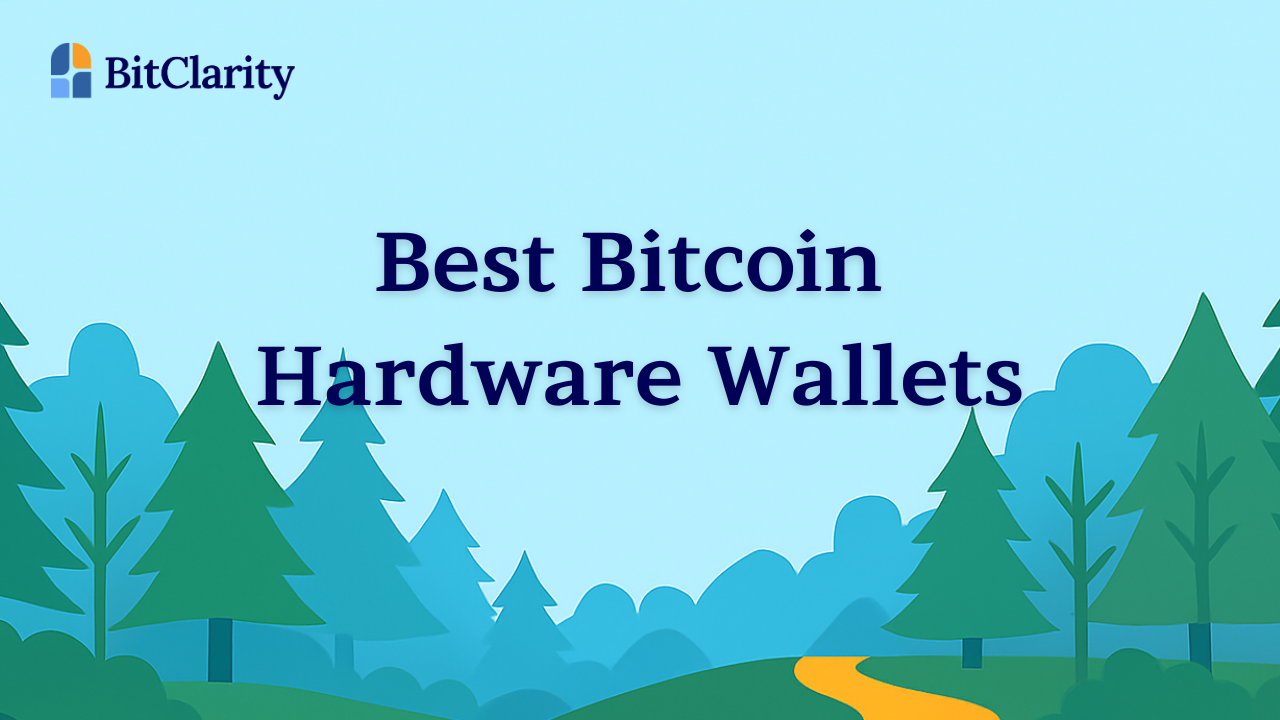
BitClarity's Guide to Bitcoin Storage
Bitcoin gives you the ability to hold your own wealth without relying on banks or middlemen—but with that power comes responsibility. BitClarity breaks down the most important storage options so you can choose a setup that fits your risk tolerance, goals, and level of experience.
Understanding Bitcoin Storage
There’s no one right way to store Bitcoin, but there are a few key principles that can help you choose the setup that fits your goals. Whether you’re new to self-custody or refining your long-term plan, these basics will help you store your Bitcoin with confidence.
Not Your Keys, Not Your Coins
When you hold your own Bitcoin keys, no one can freeze your account, block your transaction, or tell you what you’re allowed to do with your money. Whether you're saving, spending, or planning for the future, self-custody puts the power fully in your hands.
Start Simple, Upgrade When Necessary
You don’t need a perfect setup from day one. Starting with a solid, beginner-friendly option is better than overcomplicating things. As your stack grows you can always improve your setup.
Choose a Solution that Lets You Sleep at Night
The “best” storage solution is the one you can actually maintain with confidence. Whether it's a simple hardware wallet or a more advanced multisig setup, go with the option that fits your life, your risk tolerance, and your tech comfort level.
Bitcoin Storage Methods
Hardware Wallets
If you’re serious about holding your own Bitcoin, a hardware wallet is one of the most important tools you can have. These devices keep your keys offline and your Bitcoin safe from hackers, exchanges, and third-party risks.
We’ll walk you through how hardware wallets work, how to choose one, and how to use it confidently—so you can protect your Bitcoin without overcomplicating things.
Multi-Signature Custody
Multisig setups let you split control of your Bitcoin across multiple keys—adding a layer of security, flexibility, and peace of mind. They're ideal for inheritance planning, shared accounts, or managing larger amounts of Bitcoin.
We’ll help you understand how multisig works, when it makes sense, and how to build a setup that fits your life.
Institutional Custody
Not everyone wants—or needs—to hold their own keys. If you're managing Bitcoin for a company, trust, or client, or you're looking for more traditional infrastructure, institutional custody may be the right fit.
We’ll help you understand the tradeoffs, compare providers, and decide when a custody partner makes sense—and how to choose one without giving up too much control.
FAQs
Frequently asked questions regarding the Bitcoin storage process
One Bitcoin is divisible into 100 million units called satoshis (sats). You can start with as little as a few dollars. Most people buy small amounts over time and gradually build their position.
Fees can be sneaky—some platforms advertise “zero fees” but hide costs in the spread (the price difference between buy and market rate). We break down the real fee structures here.
Apps like Strike, Swan, and River are clean, focused on Bitcoin only, and don’t push altcoins. They’re a great place to start if you want simplicity and solid support.
Not necessarily. For small amounts or just learning the ropes, a mobile or exchange wallet works fine. But if you’re planning to hold for the long haul—or your stack grows—it’s smart to move your Bitcoin to a hardware wallet.
Predicting the future is hard — that's why dollar-cost averaging (DCA) is a popular strategy. It means buying small amounts regularly, regardless of price. It helps reduce the stress of trying to “buy the dip” and builds your stack over time.



